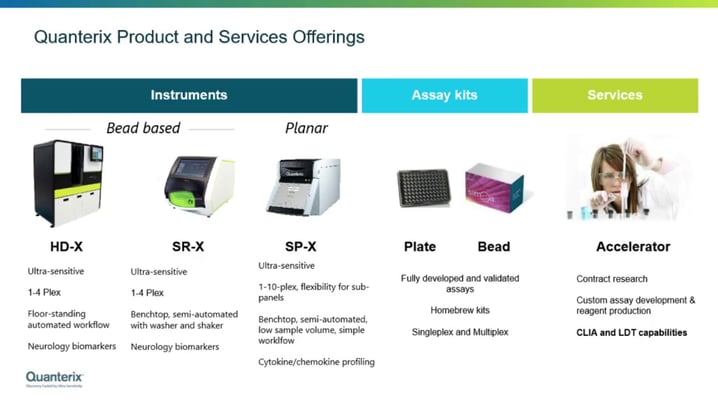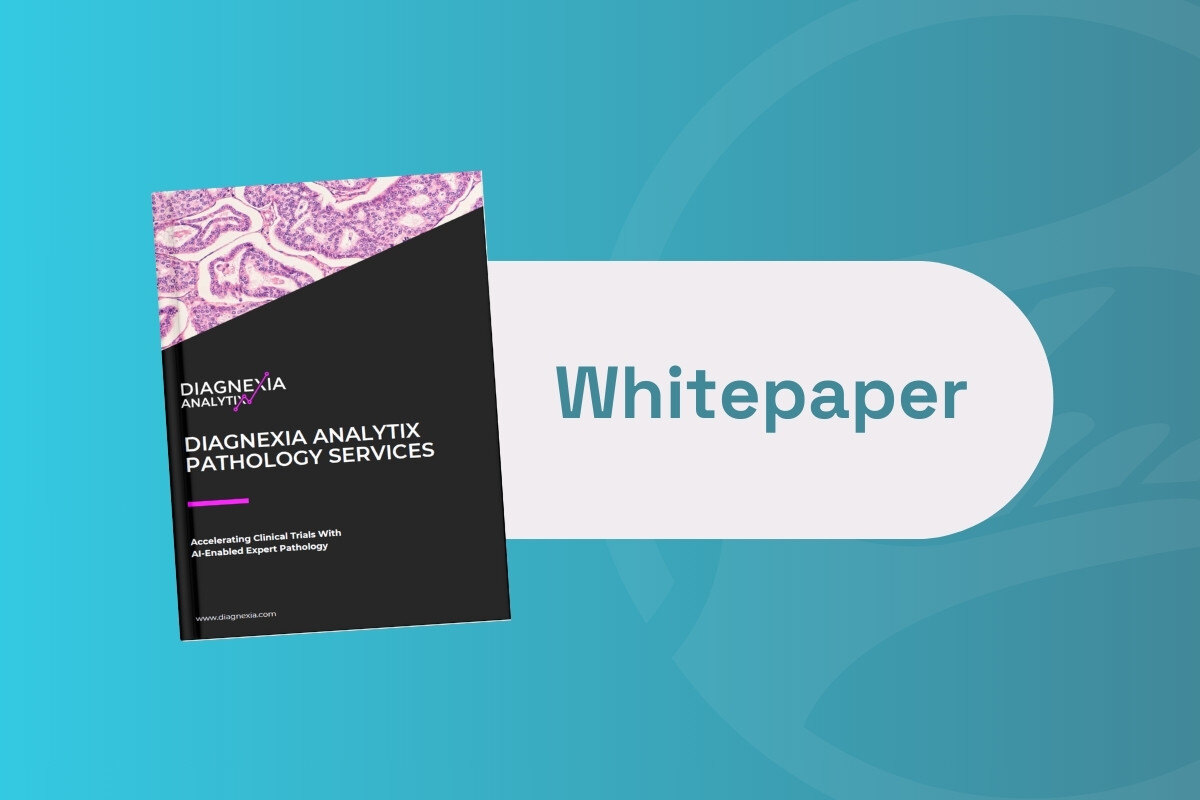Accelerating Drug Approval with Simoa®: Ultrasensitive Measurement of Biomarkers

Quanterix fuels scientific discovery through ultrasensitive detection of protein biomarkers. To date, the company has delivered nearly 900 instruments to pharma and academic organisations across North America, Europe, and Asia. Its Simoa® technology has also been cited in over 2,000 peer-reviewed publications and counting.
A global company, Quanterix is headquartered outside of Boston, Mass., with support teams located across Europe. The guiding philosophy of its technology is simple: the higher the sensitivity, the greater the ability to detect proteins at their lowest levels, enabling scientists to detect disease earlier. Outlining the principles of Simoa technology and use cases, Milena Dumont Milutinovic, Senior Manager of Field Applications at Quanterix, presented at Oxford Global’s Biomarkers 2023 conference.
How Simoa Works
“For us, Simoa is a synonym for sensitivity,” Dumont Milutinovic explained. Quanterix has two technologies that fall under the umbrella of Simoa: bead-based and planar array. Both platforms use ELISA-like (enzyme-linked immunosorbent assay) technologies in which sandwiched immunocomplexes are labelled with an enzyme. The edge that Quanterix can claim over traditional ELISA methods is that Simoa® is up to 1,000 times more sensitive.
Bead-Based Technology
Beads are used as a solid face in which to immobilise the capture antibody. Dye-encoded magnetic beads that are covered with the capture antibody attach to the target protein, which creates an immunocomplex with the detection antibody. This detection antibody is conjugated to an enzyme that turns a non-fluorescent substrate into a fluorescent product to create a mechanism for measurement.
Once the immunocomplex has formed, the beads are loaded into a microarray of over 200,000 wells. Each well contains a substrate and is small enough to only allow one bead inside. The well’s volume is about 50 femtolitres. Once the wells are closed, the system concentrates the signals that are produced by the enzymes. Thanks to the small volume, the signal is measurable even if they only have one immunocomplex per bead.
- Selection Biomarkers: Shaping the Future of Drug Development and Regulatory Approval
- Multimodal Biomarkers: How Screening Approaches Can Benefit From AI
- GOAL: A Collaborative Approach to Next Generation Sequencing in Oncology and Beyond
Multiplex assays are also possible by using beads with different dyes. Therefore, Simoa® can respond to a variety of applications within different disease areas. Dumont Milutinovic stated that Simoa® bead technology is presently widely used in neurology since its increased sensitivity allows for liquid biomarker measurement in the blood, moving away from cerebrospinal fluid. "This is why Simoa® is a leading technology for measuring liquid biomarkers," she said.
Planar Array
To go further with multiplexing while maintaining the high sensitivity, Quanterix offers planar array technology. Here, antibodies are spotted at the bottom of a plate using Quanterix’s patented high-density antibody printing technology. A combination of this type of printing, chemiluminescence, and multiple exposure times has allowed for a technology that is ultrasensitive in multiplex – up to 10 plex simultaneously.

Quanterix offers two bead-based instruments and one planar-based instrument. It also offers assay kits for both platforms and contract research services. All of its technologies are open platforms, allowing users to develop assays using custom antibodies, if required.
Application
Considering the application of Quanterix’s technology, Dumont Milutinovic explained that Quanterix caters to the different sectors of the proteomics landscape, all of which have different requirements. Simoa® is an ultra-high sensitivity, high-precision technology. Furthermore, Quanterix’s HD-X™ Automated Immunoassay Analyzer allows for the possibility of automation. Because of this, Simoa® is well suited to clinical research and clinical trials.
Example 1: NfL
In her first example, Dumont Milutinovic discussed the biomarker neurofilament light (NfL). The high presence of the protein is not diagnostically related to any one particular disease but is indicative of neuronal and axonal injury. However, Dumont Milutinovic commented: “If we know the disease in question, NfL can be a useful biomarker for monitoring the progression of that disease or for tracking the efficacy of the treatment.”
For example, the disease progression of MS in patients can be monitored by the presence of NfL. Dumont Milutinovic presented data of NfL measured in the blood using Simoa® and data collected via MRI, which is the current gold-standard for monitoring neurodegeneration in MS. The results corresponded across the tests whereby NfL levels correlated with disease progression in both cases. Furthermore, Simoa® analysis of patients’ blood demonstrated the efficacy of the drug fingolimod. Treatment with the therapy revealed a decrease in NfL count over time when compared to the placebo group.
Example 2: pTau-181
A more specific neuro biomarker is phosphorylated Tau-181 (or pTau-181), which is particular to Alzheimer’s disease. Dumont Milutinovic compared measurements of pTau-181 in a Simoa® blood test to amyloid β and tau PET scans, which are the current gold standards for Alzheimer’s disease detection. The results indicated that levels of pTau-181 were higher for patients with positive amyloid β or tau PET scans compared to those that were negative for at least one of them.
Interestingly, the same correlation was seen very early in disease progression before tau pathology tends to emerge. Patients with positive amyloid β PET scans showed increased levels of pTau-181 in the blood. This particular discovery signals that Simoa® testing could be well utilised for screening which patients should enroll in clinical trials for Alzheimer’s drugs.
Conclusion
Simoa® technology has been effectively utilised in multiple biomarker measurements for pre- and post-market clinical trials. As the go-to assay technology for neurology blood-based biomarkers, it also has a broad and expanded range of applications.
Want to read more articles like this and take part in discussions on best-practice approaches to biomarkers in oncology? Check out our membership PLUS options to learn more. If you’d like to attend our upcoming Biomarkers US conference, visit our event website to download an agenda and register your interest.

This article has been sponsored by Quanterix






.jpg)
